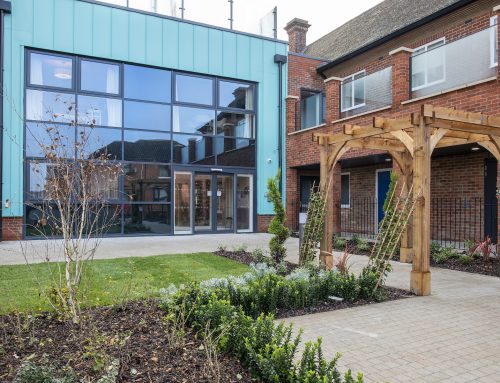Addressing shortfalls in the UK’s senior living provision
The UK’s population is ageing rapidly. As life expectancy rises dramatically, the number of people over 85 is set to almost double by 2045, creating a surge within the elderly population likely to overwhelm existing senior living and care home infrastructures.
Adult social care experts agree that unless local authorities and governments act urgently, we are heading toward a future where some of our most vulnerable citizens will be left without suitable accommodation and amenities.
Despite 2021’s record-breaking investment volumes, the UK’s senior living and care home market has plenty more scope for development. So, how can real estate investors help meet the demand for state-of-the-art facilities in these sectors at this crucial juncture?
A crisis looms
Although the senior living and care home market has picked up in volume in recent years, the landscape of elderly care provision in the UK remains inadequate.
In addition, a perfect storm of global events has now hit the UK’s property market causing skyrocketing materials prices. Combined with domestic challenges such as scarcity of land, labour shortages and a dysfunctional planning system, this means that supply for our ageing population is not materially increasing.
For example, the size of the UK’s care home market has shown very limited growth in recent years, with beds increasing by just 0.1% between 2020 and 2021, according to Knight Frank’s 2021 ‘Healthcare Development Opportunities’ report. The same report recorded 480,072 beds across 12,034 care homes as of April 2021, whilst the number of people over 65 is projected to make up 24% of the population (17.4 million people) by 2043.
Many of today’s care homes are also deemed unsuitable. The Centre for Ageing Better’s ‘The Good Home Inquiry’ analysis of England’s housing policies determined that around 10 million people in England currently live in a property that lacks necessary facilities. These homes impair residents’ health, with the poorer, older or disabled at most risk.
The UK’s care home stock is the oldest in Europe, with 71% of care homes over 20 years old and many converted from other uses. As a result, much of the existing stock in the UK is inefficient, compounding rising utility costs, and lacks the facilities required to care for the specialist needs of our ageing population.
Care home developers must act quickly to build enough homes to meet future demand and prevent healthcare systems from being left to manage the fallout.
A proactive approach
Should care home development continue at the current rate, the UK will remain drastically unprepared to offer accessible resources to the millions of people who need them.
In the wake of post-pandemic downturns in the traditional real estate investment sectors (offices, retail and industrial), participating in the care home market is swiftly becoming increasingly attractive for global institutional investors.
Progress in this sector has been slow throughout the pandemic, during which some developers paused projects. However, momentum has been building since COVID-19 exposed weaknesses in the UK’s care systems.
Rynda Healthcare is our investment platform focusing on the senior living and care home market, actively seeking investment opportunities and funding solutions for well-situated, high-quality assets with the potential to provide affordable options for older people.
We have invested nearly £200 million in the last 12 months because the sector demonstrates supply and demand characteristics to produce stable, long-term returns. We expect to see high demand for more purpose-built accommodation equipped to deal with the complex medical and personal needs of elderly residents, featuring en-suite facilities, energy-efficient designs and attractive leisure amenities.
Interested in pursuing an investment opportunity in the exciting senior living market? Contact the Rynda Healthcare team at +44 (0) 20 3709 9875 to discover our application requirements and discuss your goals.





